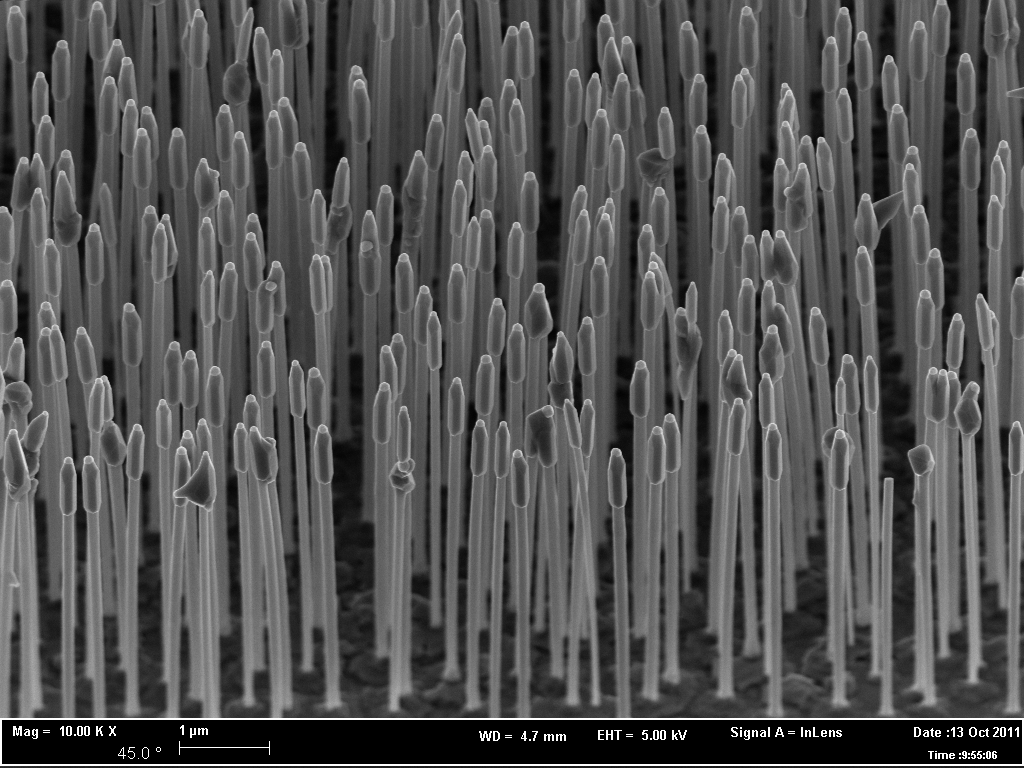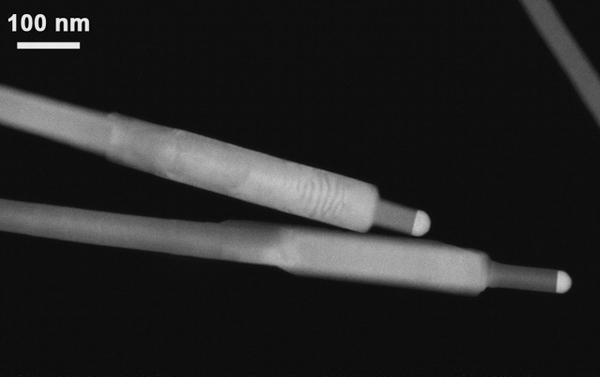Vocabulary
Nanowires
What are they?
They are nanomaterials with an elongated cylindrical structure, with diameters between 15 and 200 nm and lengths of a few tens of nanometres up to a maximum of a few tens of microns (unidimensional material).
What are they used for?
At the moment they are used mostly in research to study their interesting and peculiar electron transport and optical properties, but there is a growing interest both in the alternative energy sector (there are interesting applications in photovoltaic systems and in the harvesting of mechanical energy from the environment) and in the advanced sensor systems sector.
How are they produced?
Nanowires are synthesised in vacuum growth chambers (e.g. CBE) on a semiconductor macroscopic crystalline substrate to which they are "strongly" anchored. The other extremity (the one that is not anchored to the substrate) is usually made of an approximately hemispherical metallic nanoparticle with the same diameter of the nanowire. They can then also be synthesised in liquid phase through chemical processes that allow the formation of colloidal solutions.

SEM image of a "forest" nanowires grown with CBE technology on a semiconductor substrate.

STEM image of individual nanowires: the Au particle, the catalyst and the different crystalline parts can be recognised. (production SNS/CNR-NANO)